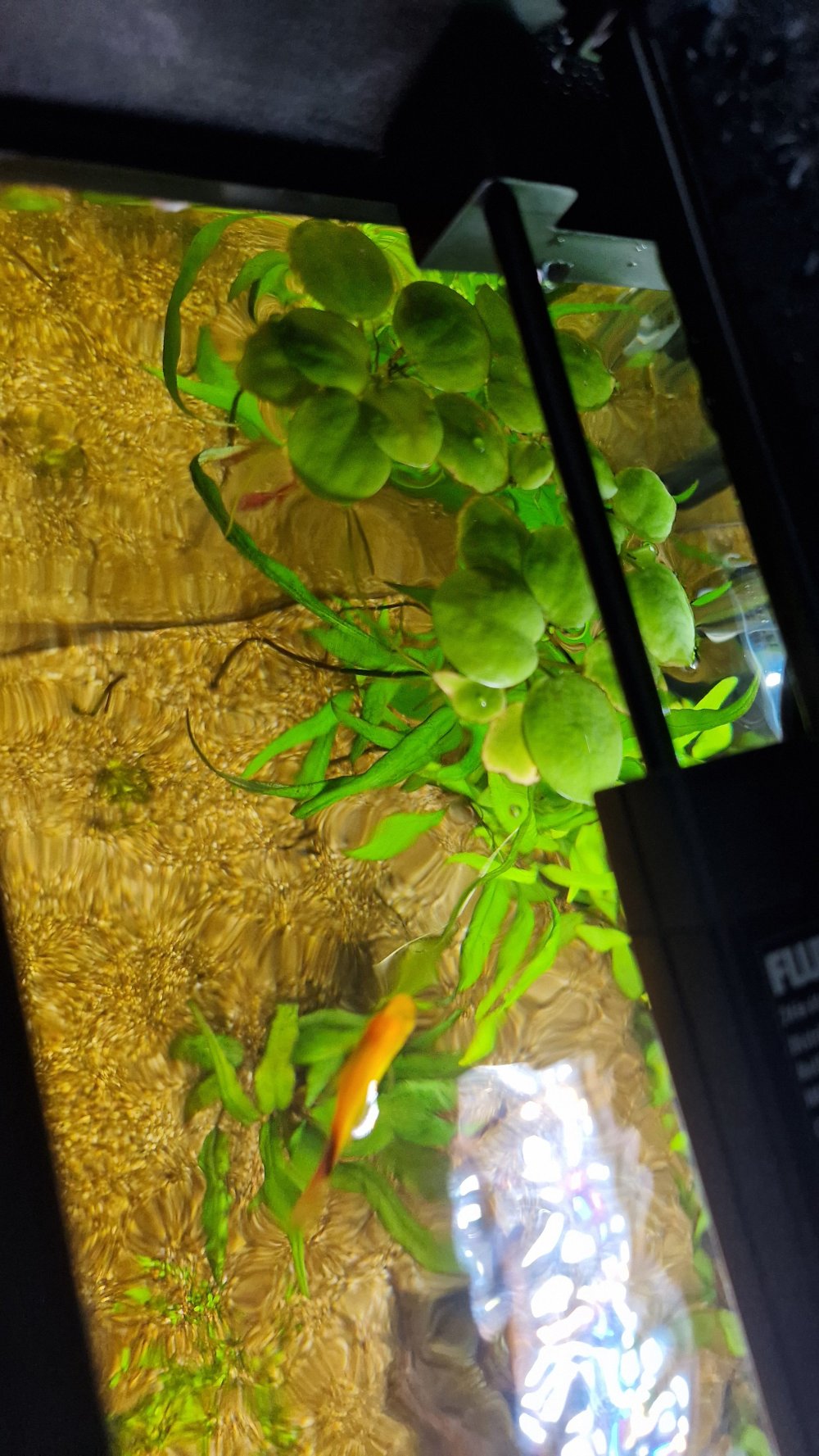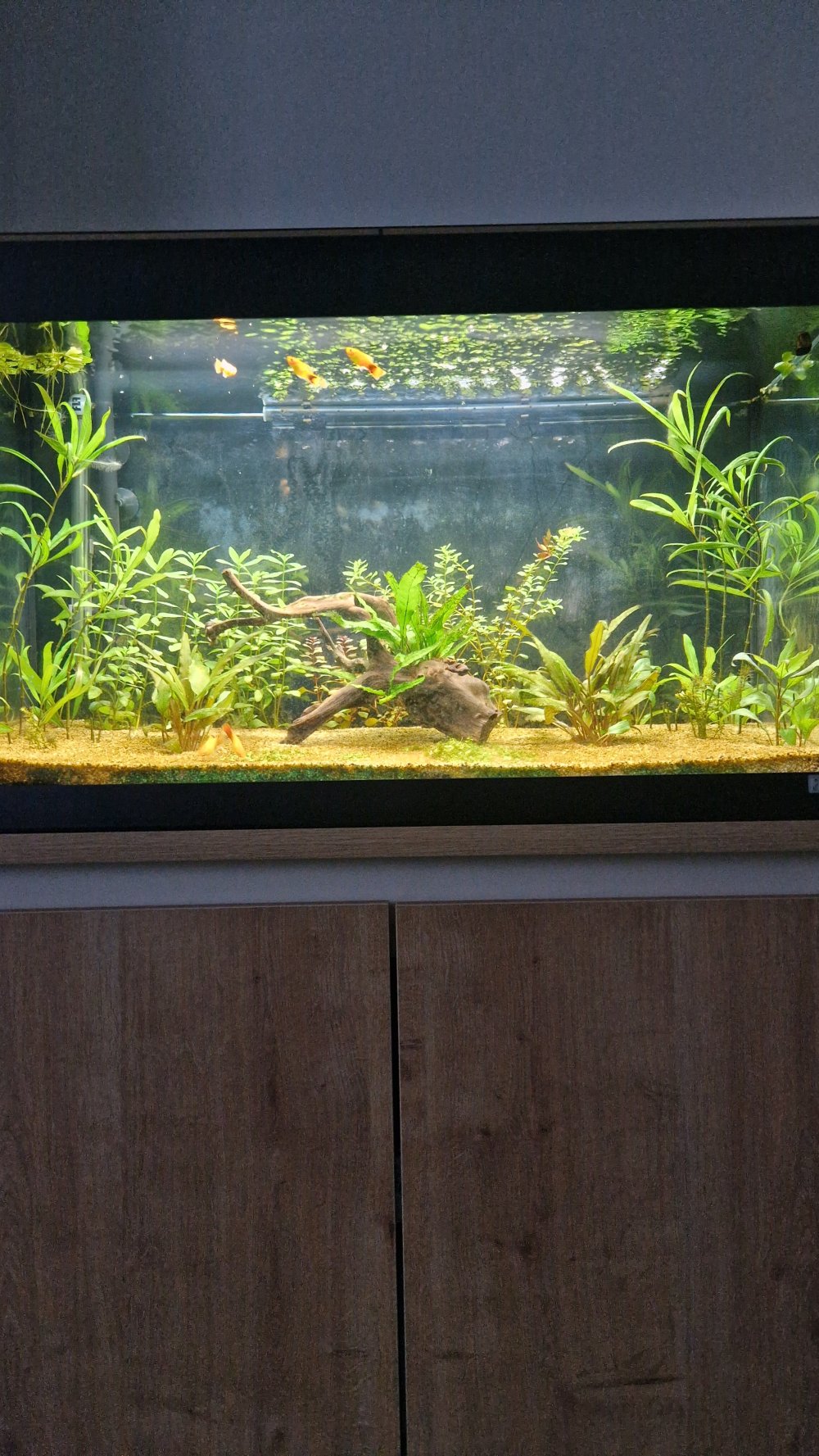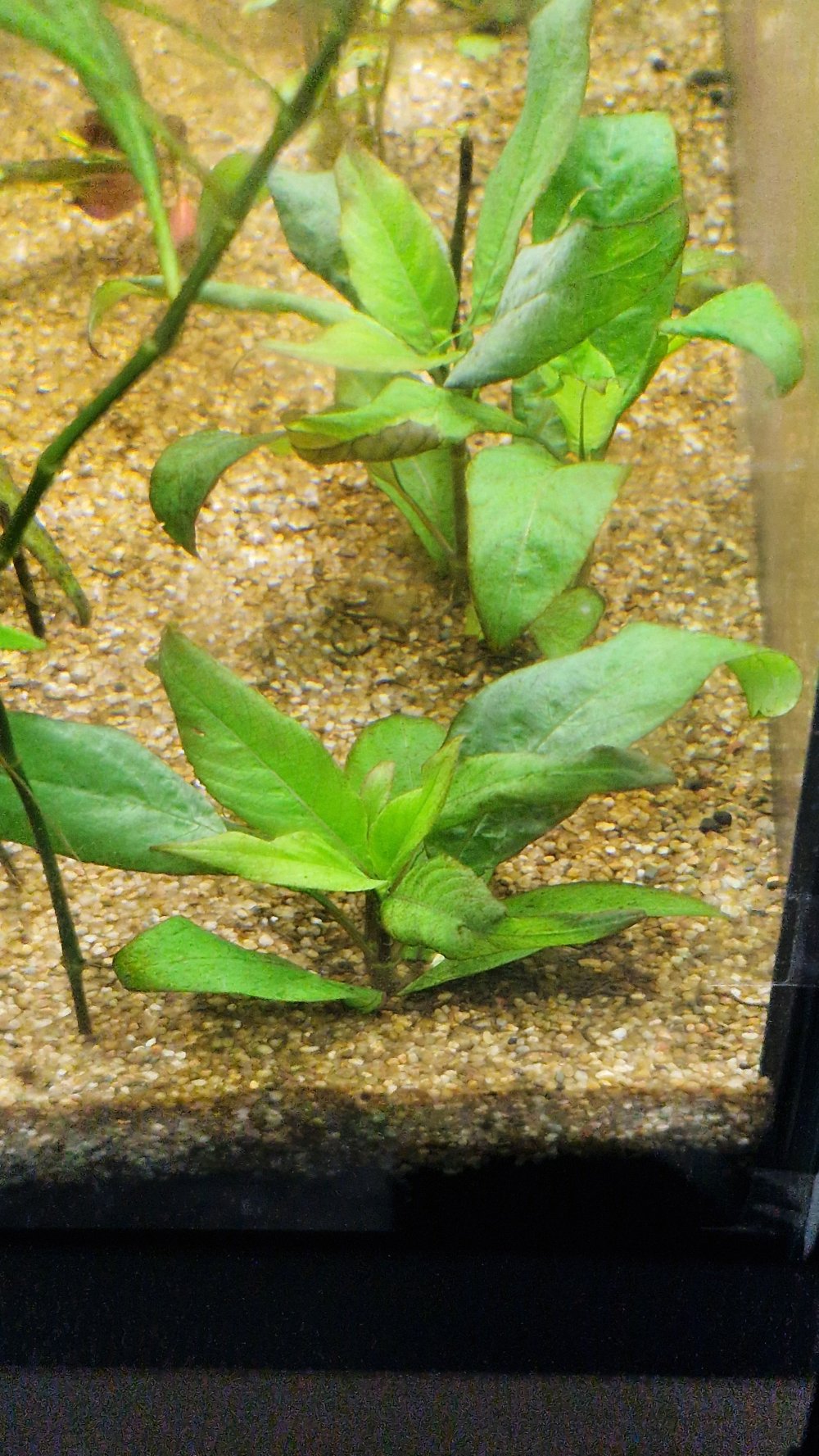AquariusPeter
Member
Hi all,
I don't know where to put this post but I hope moderator won't kill me. I am writing here regarding my Fluval Bio - Stratum...
Before I describe the problem i will put some more details about my tank.
1. Tank Fluval Roma 125l
2. Substrate:
3. Filtration:
5. Fertilizers:
6. Water:
7. Flora:
Because of this tank is relatively fresh as it's started few months ago, I have still problem with Brown/Diatoms algae and in the past weeks i had problems with Hair algae as well. From few days I am observing signs of cyanobacteria(as I guess- it is) on the front glass , I photographed them today. I have read that cyanobacteria could be from excessive PO4 and NO3...
I have tested my tank water column with my JBL Test for PO4....
Test Results was - 0mg/l....
Then I took the tap water straight from the Tap and i did test again just to see what is going on in my tap water:
Well let me attach photo below:
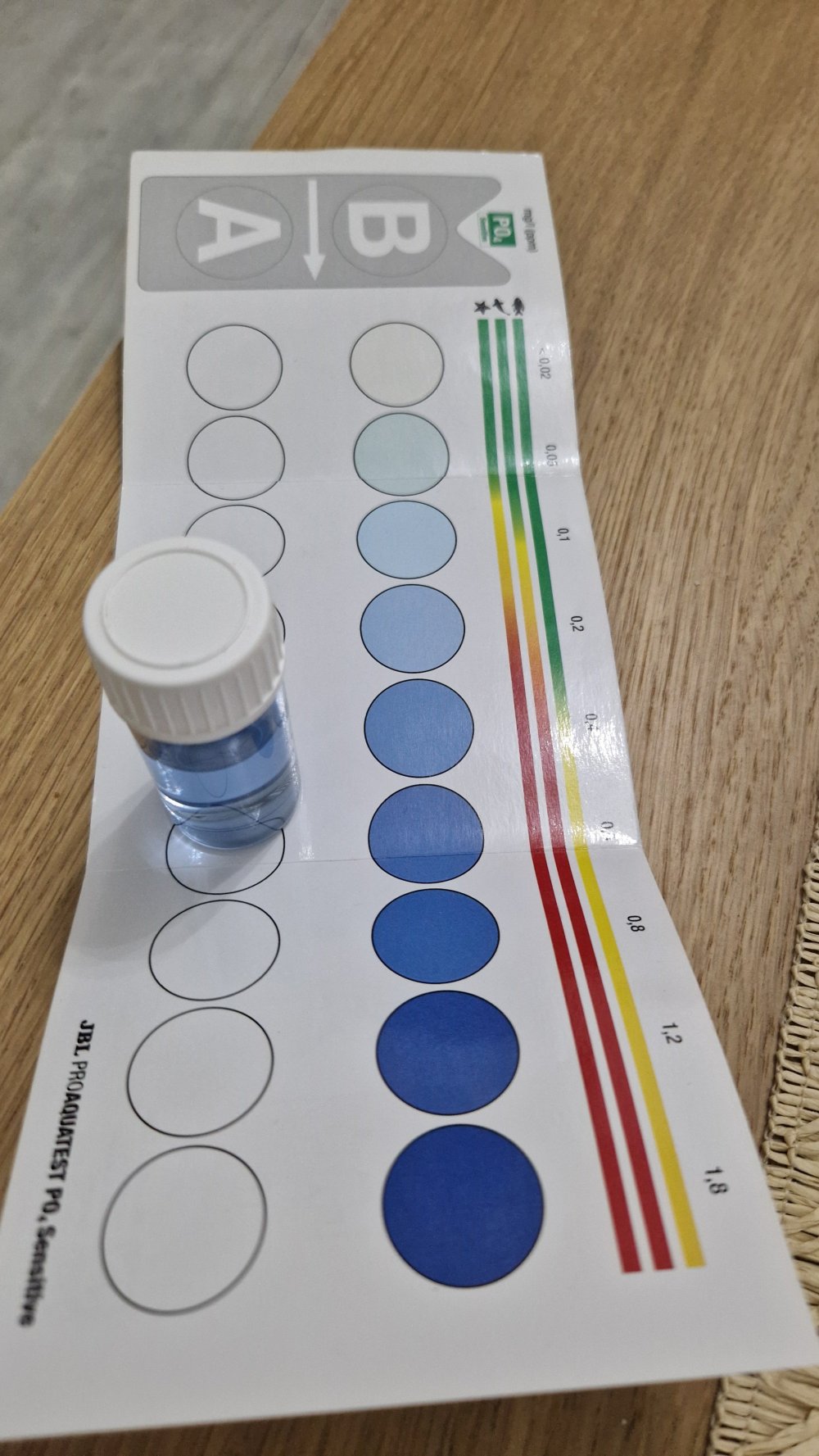
On the photo above in vial is tap water ---> straight from my tap.
Well I was about to buy/order dry salts KH2PO4 just to refill PO4, but I realised my Tap Water has more than enough, and TNC Complete which I am no dosing really often.
My conclusion is Fluval Bio - Stratum - PO4 Absorber ....
Is this possible that this substrate Fluval Bio-Stratum, everytime when i do my water changes, absorbing PO4 and during the tests is showing me 0 ???
If yes so then i might be living on ticking bomb...
I have done some tests on NO3 in my tank and tap water as well. But these ones looks allright.
I am really thinking what to do right now... Because If my tap water is high in Nitrates, Posphates, and if I keep continuing with my water changes then this substrate one day will explode with PO4, or it has started already been doing it ....
For the moment I am considering restart with just the gravel about gradation 2-3mm.... before it will end up with disaster
or
Not keep with Water Changes and dosing only Fe DTPA with EDDHA.... But this option would much more harder to keep fight with algae in whatever way i can...
Let me know guys what you think about it ?
What steps should I follow in this kind of situation ?
Thank you,
Kind Regards
Peter
I don't know where to put this post but I hope moderator won't kill me. I am writing here regarding my Fluval Bio - Stratum...
Before I describe the problem i will put some more details about my tank.
1. Tank Fluval Roma 125l
2. Substrate:
- Fluval Bio Stratum (under gravel)
- Gravel gradation 2-3 mm
3. Filtration:
- JBL E902 with spray bar for better circulation and agitation of water surface
- Fluval Aquasky 2.0 reeady with set roma 125l - 30% of power with Blue spectrum reduced to 15%
- Fluval Plant 3.0 60cm/32W - 30% of power with Blue spectrum reduced to 15%
5. Fertilizers:
- TNC Complete
- TNC Lite
- TNC Iron AT DTPA
- Fe EDDHA solution
6. Water:
- Tap Water which is ~12 Gh ~7 Kh and is relatively high in Nitrates and Phosphates
7. Flora:
- Hygrophila Corymbosa
- Hygrophila Polysperma
- Ludwigia Palustris Red
- Microsorium Pteropus
- Cryptocoryne
- Rotala Rotundifolia
- Rotala Wallichi (On the edge of death)
- 5x Orange Platies
- 2x Zebra Snails
- Some of Red Cherry Schirmps
Because of this tank is relatively fresh as it's started few months ago, I have still problem with Brown/Diatoms algae and in the past weeks i had problems with Hair algae as well. From few days I am observing signs of cyanobacteria(as I guess- it is) on the front glass , I photographed them today. I have read that cyanobacteria could be from excessive PO4 and NO3...
I have tested my tank water column with my JBL Test for PO4....
Test Results was - 0mg/l....
Then I took the tap water straight from the Tap and i did test again just to see what is going on in my tap water:
Well let me attach photo below:

On the photo above in vial is tap water ---> straight from my tap.
Well I was about to buy/order dry salts KH2PO4 just to refill PO4, but I realised my Tap Water has more than enough, and TNC Complete which I am no dosing really often.
My conclusion is Fluval Bio - Stratum - PO4 Absorber ....
Is this possible that this substrate Fluval Bio-Stratum, everytime when i do my water changes, absorbing PO4 and during the tests is showing me 0 ???
If yes so then i might be living on ticking bomb...
I have done some tests on NO3 in my tank and tap water as well. But these ones looks allright.
I am really thinking what to do right now... Because If my tap water is high in Nitrates, Posphates, and if I keep continuing with my water changes then this substrate one day will explode with PO4, or it has started already been doing it ....
For the moment I am considering restart with just the gravel about gradation 2-3mm.... before it will end up with disaster
or
Not keep with Water Changes and dosing only Fe DTPA with EDDHA.... But this option would much more harder to keep fight with algae in whatever way i can...
Let me know guys what you think about it ?
What steps should I follow in this kind of situation ?
Thank you,
Kind Regards
Peter
Attachments
-
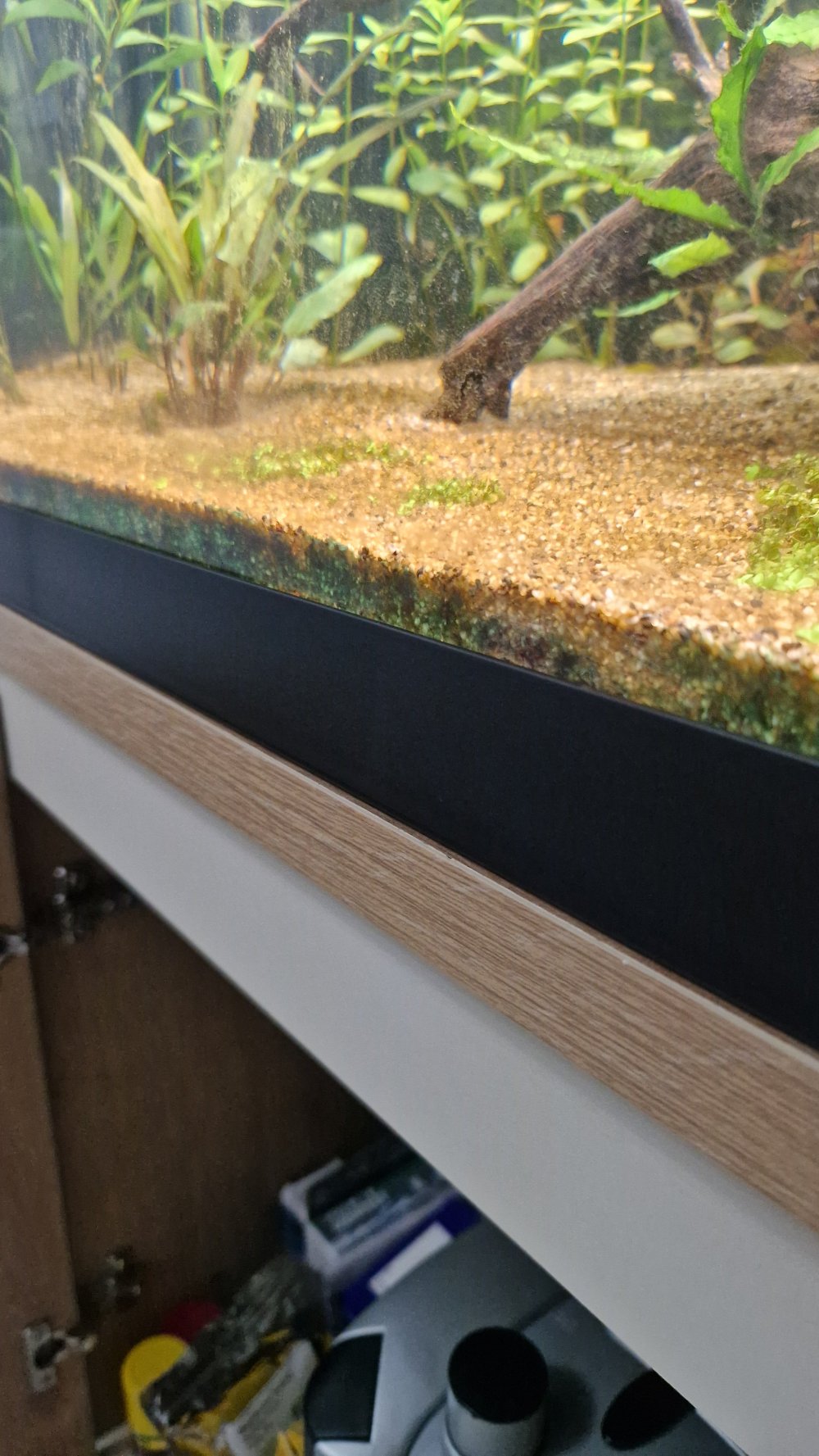 20241012_182540.jpg1.3 MB · Views: 17
20241012_182540.jpg1.3 MB · Views: 17 -
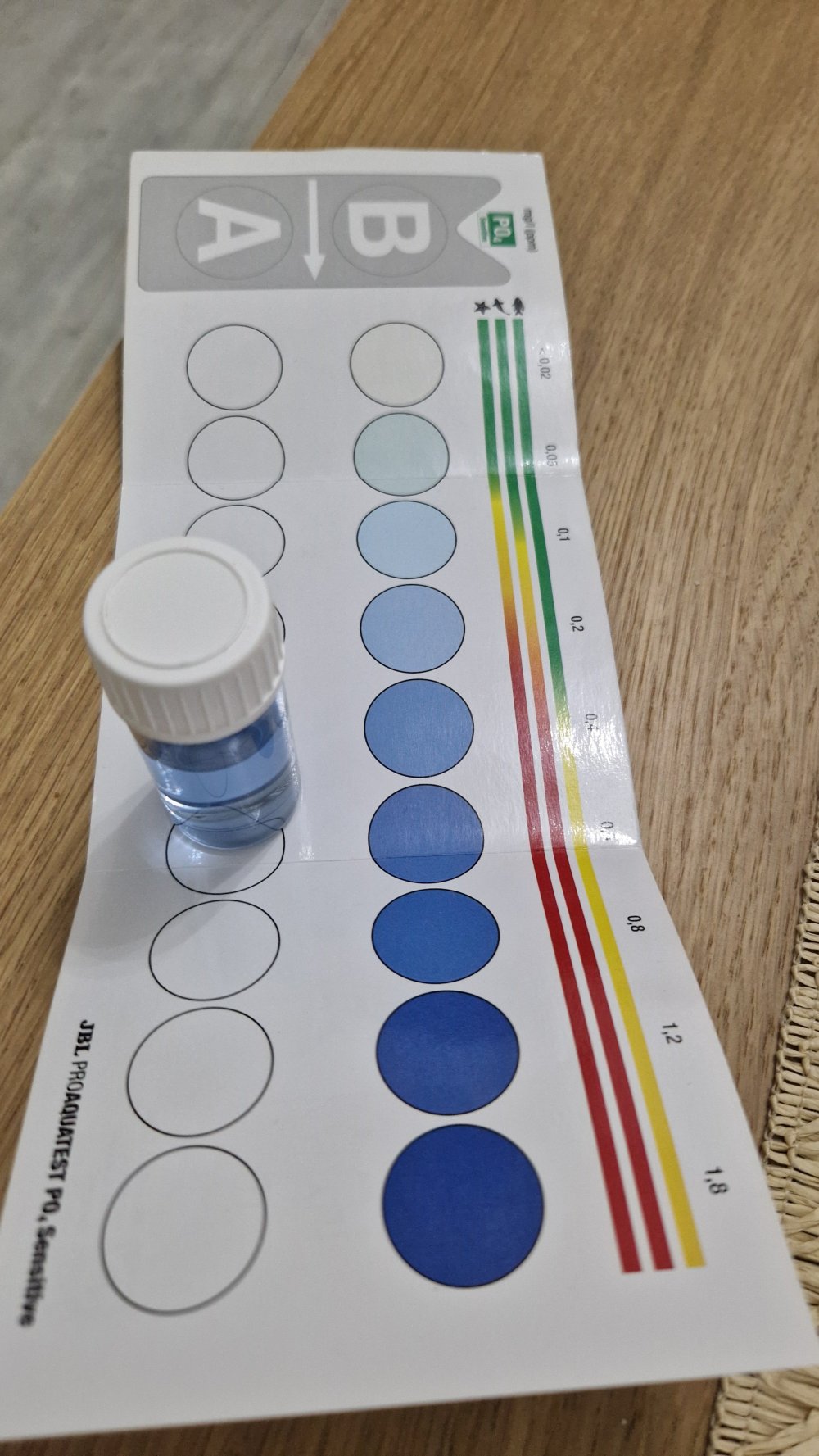 20241012_182622.jpg1.2 MB · Views: 13
20241012_182622.jpg1.2 MB · Views: 13 -
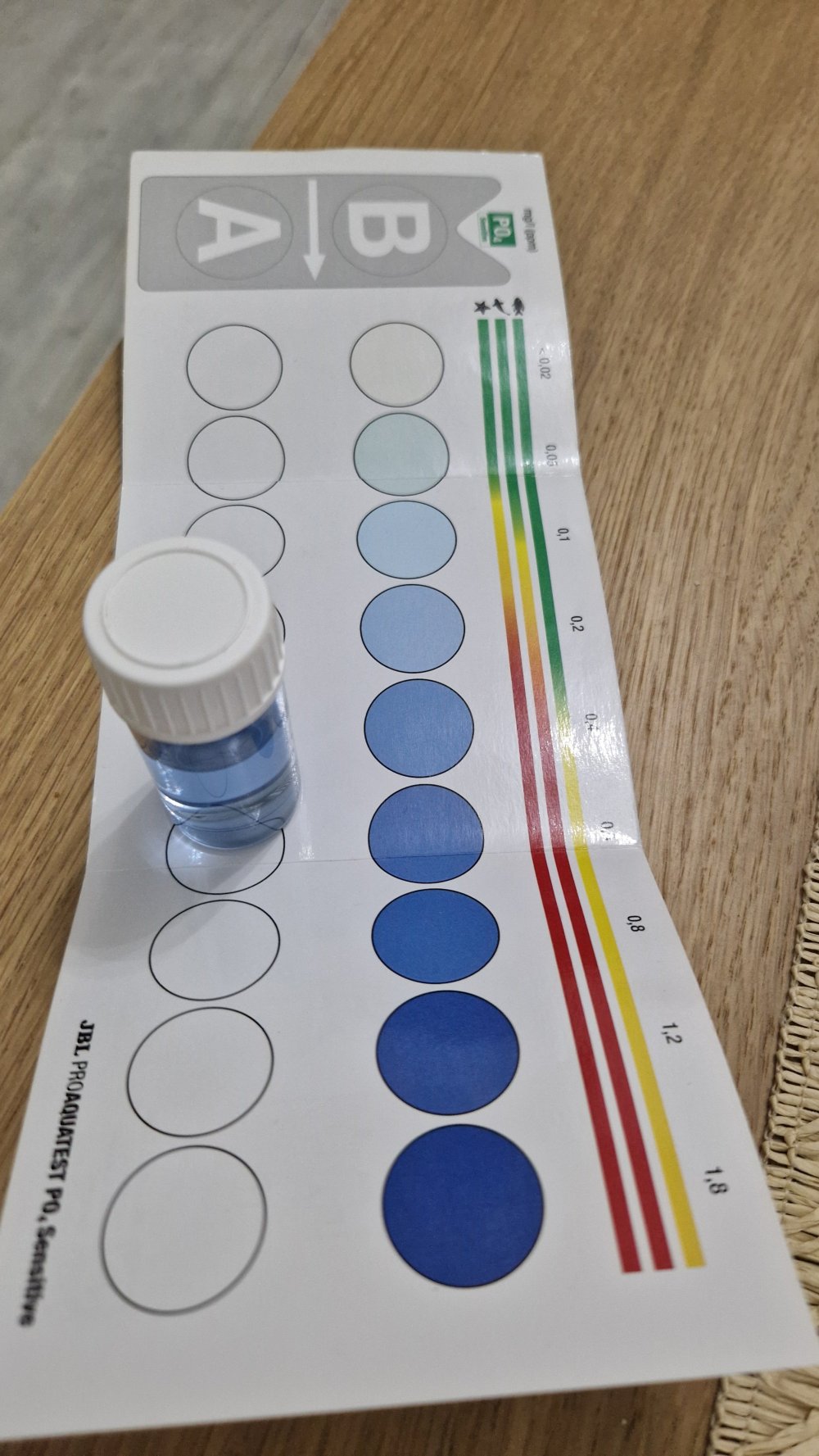 20241012_182622.jpg1.1 MB · Views: 14
20241012_182622.jpg1.1 MB · Views: 14 -
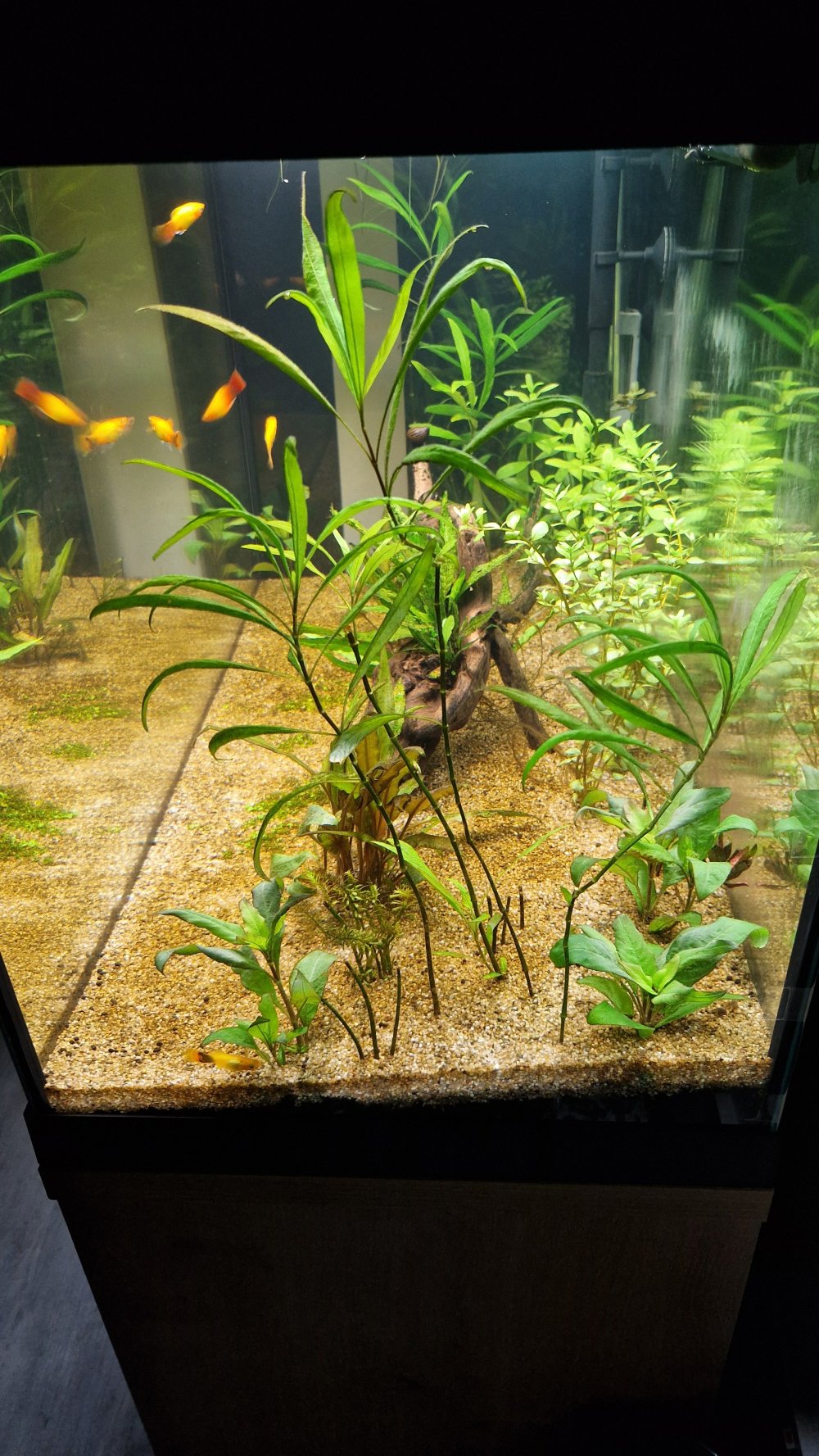 20241007_201035.jpg1.7 MB · Views: 14
20241007_201035.jpg1.7 MB · Views: 14 -
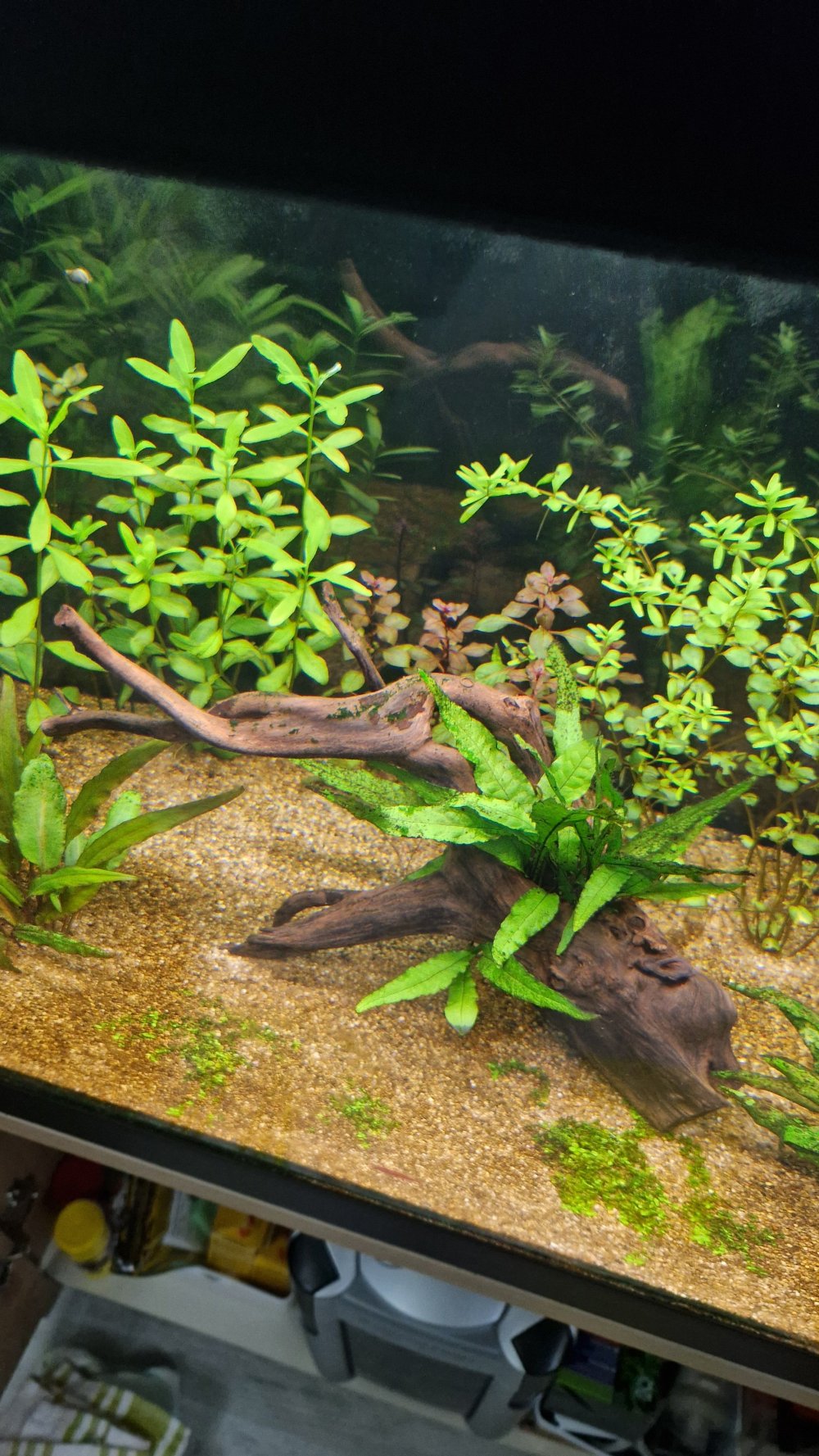 20241012_182603.jpg1.6 MB · Views: 16
20241012_182603.jpg1.6 MB · Views: 16 -
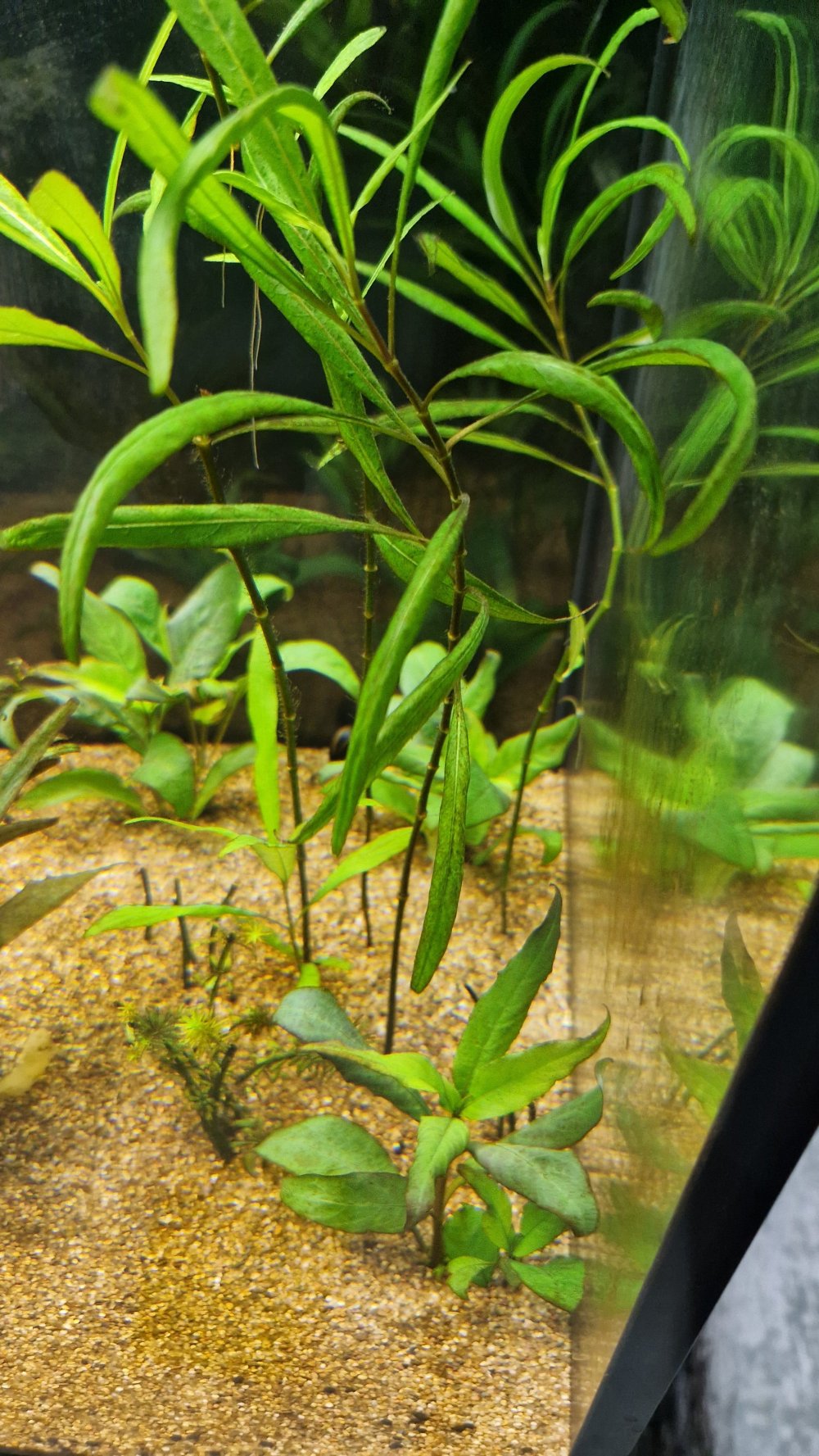 20241012_182555.jpg1.6 MB · Views: 13
20241012_182555.jpg1.6 MB · Views: 13 -
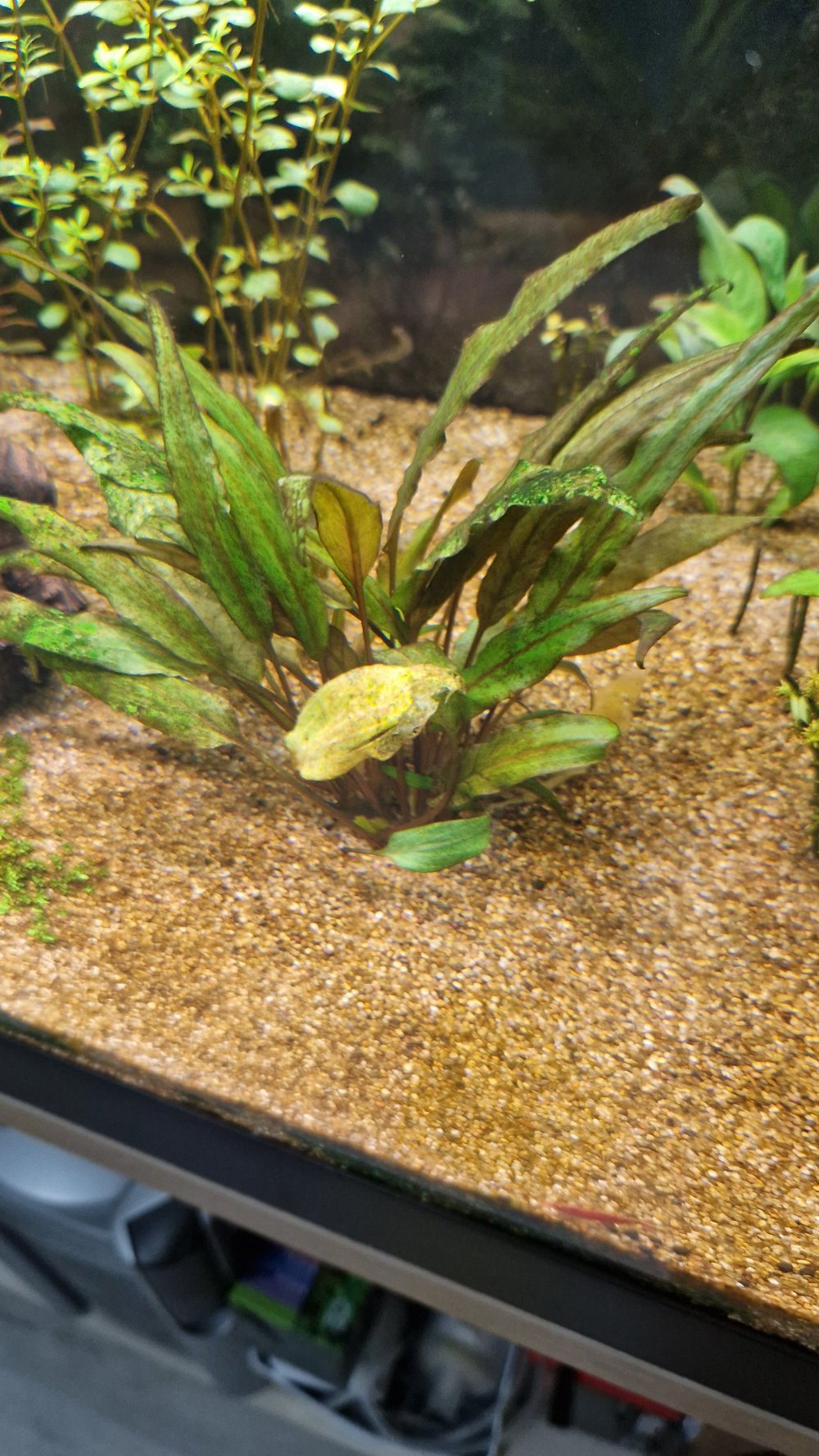 20241012_182552.jpg1.5 MB · Views: 17
20241012_182552.jpg1.5 MB · Views: 17 -
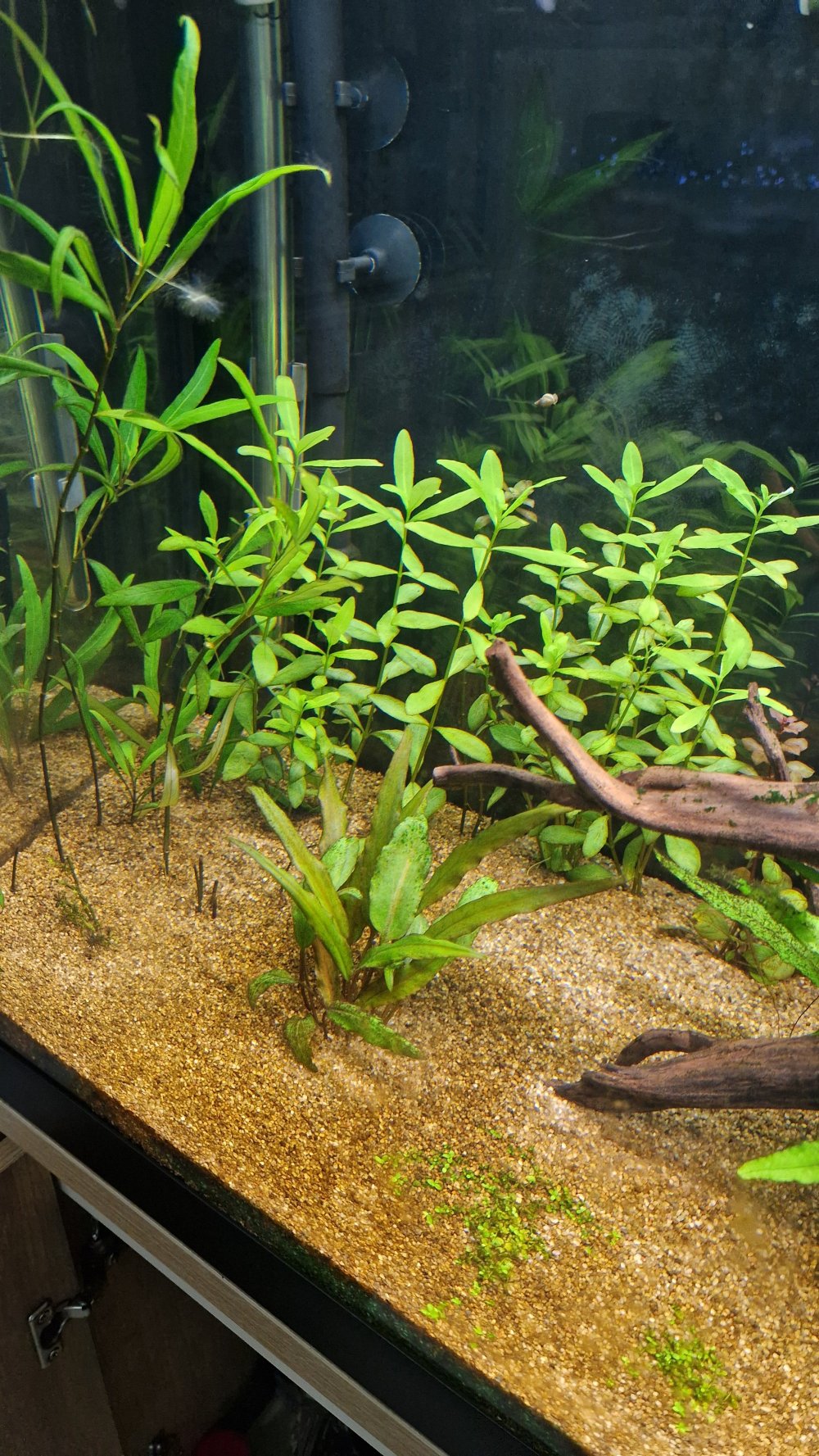 20241012_182546.jpg2 MB · Views: 13
20241012_182546.jpg2 MB · Views: 13 -
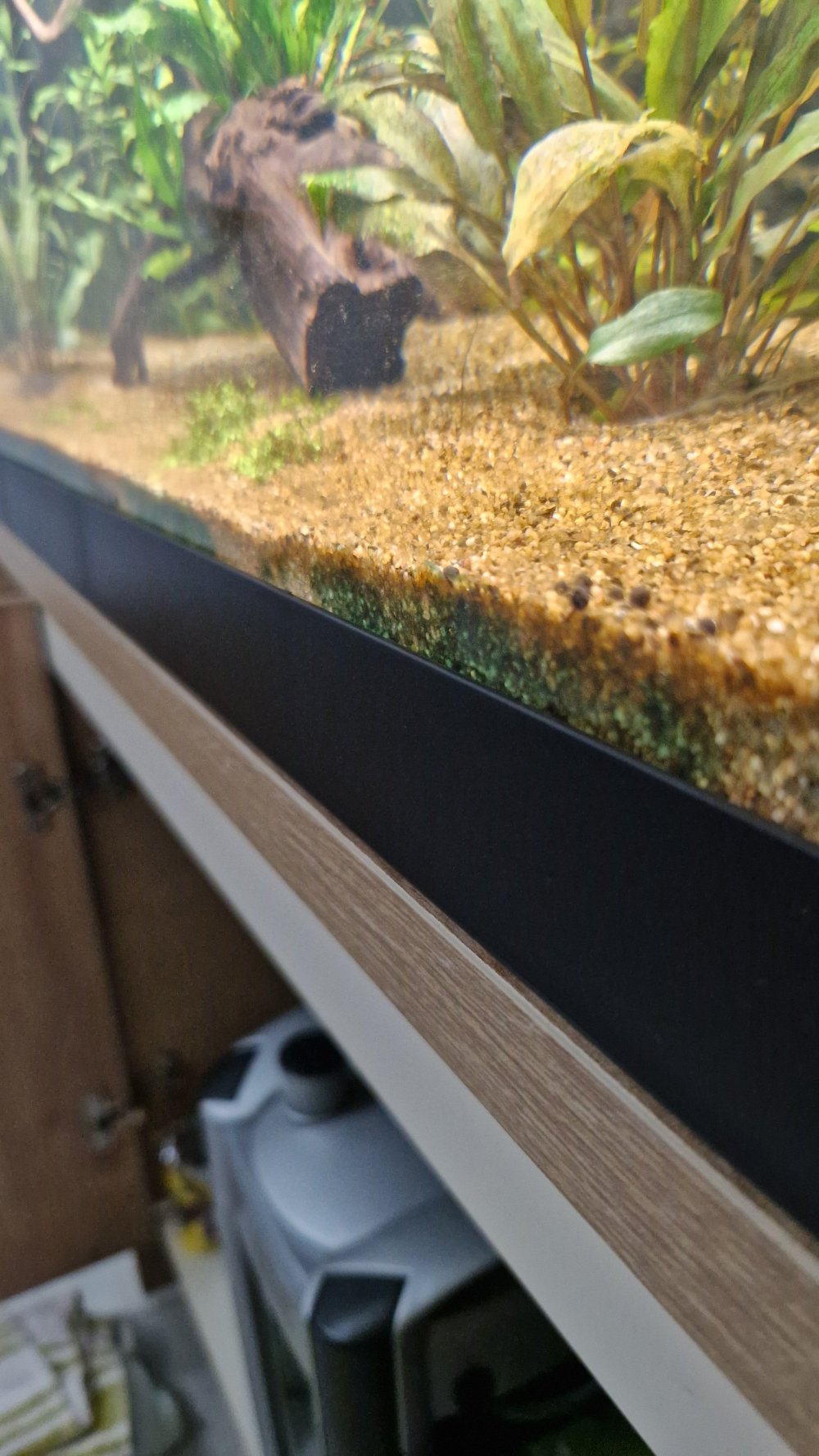 20241012_182537.jpg1.2 MB · Views: 23
20241012_182537.jpg1.2 MB · Views: 23


